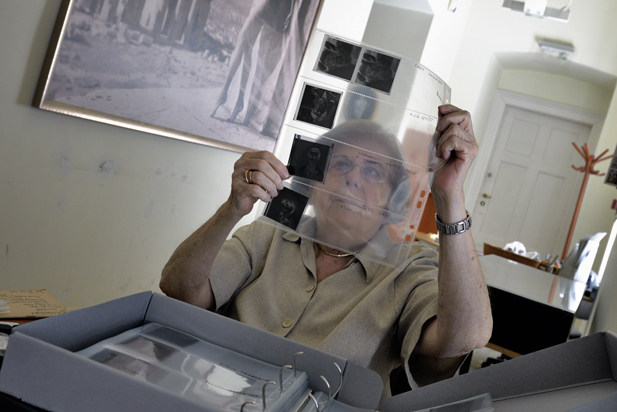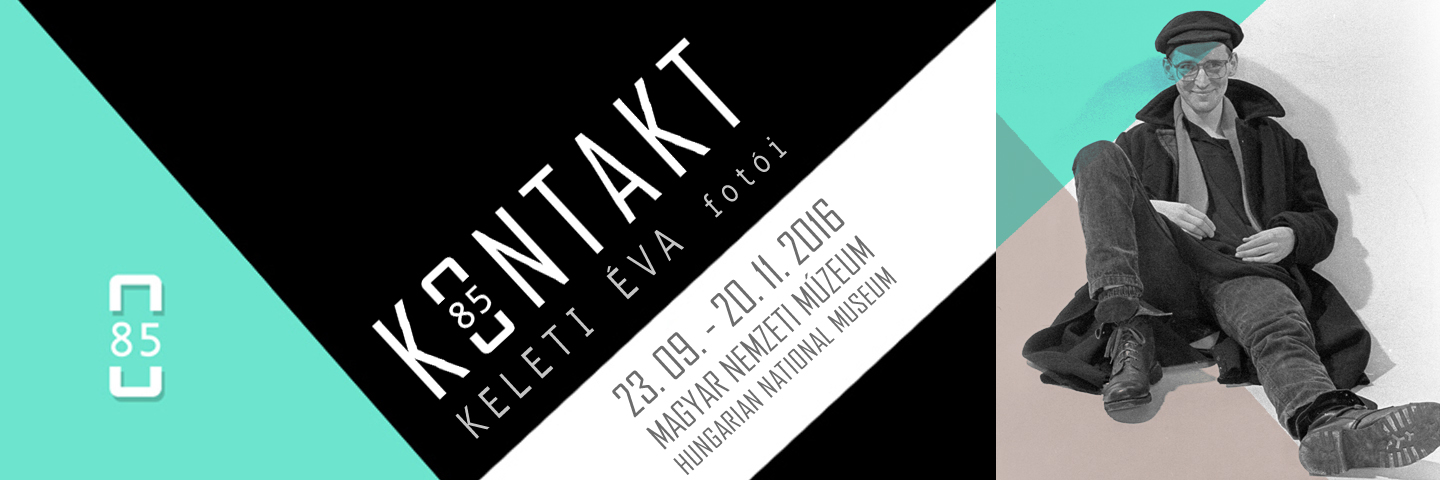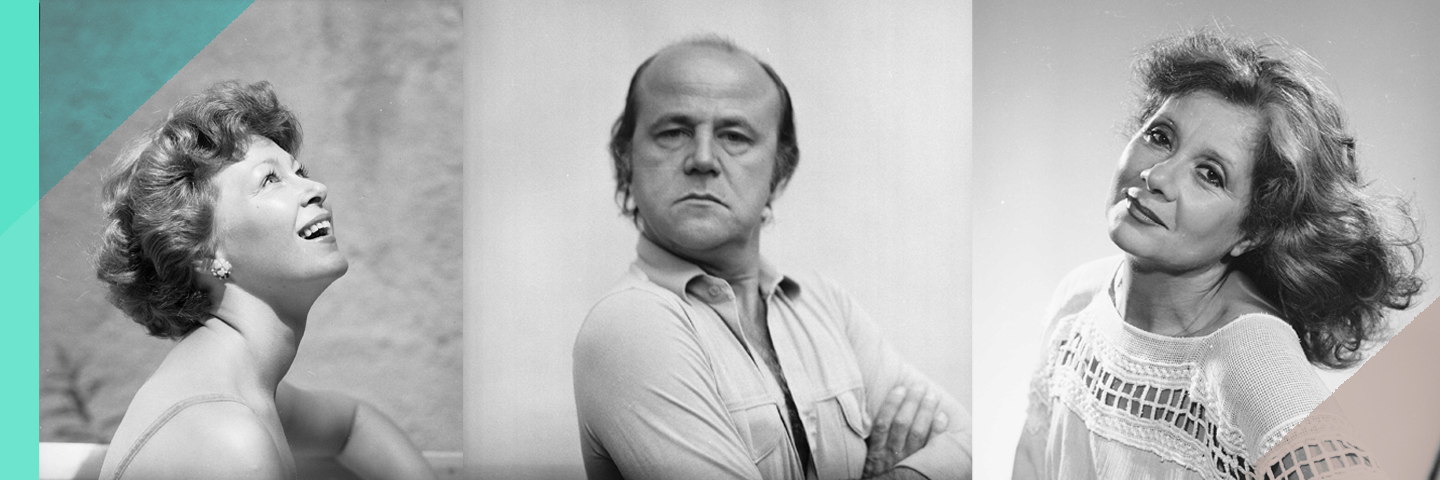
Photographs by Éva Keleti
Freer Playing
The exhibited photographs cover two time periods. I took the first part of them during my years at the weekly Új Tükör (New Mirror) between 1976 and 1989, and the other group of the photos were taken for the magazine Színházi Élet (Theatre Life), a short-lived but important periodical in the early 1990s.

I had the possibility to overstep the framework of usual and accepted portrayal during my work at Új Tükör, and this was even more so at Színházi Élet. In short it meant that I could encourage my models, mainly the actors and actresses to be more released. I asked them to act in front of the camera the way they would not dare to elsewhere. I myself became more released as a photographer when I left my job at MTI (Magyar Távirati Iroda; Hungarian Telegraphic Office). The numerous rules, regulations and obligations which characterised news agency photography of the Kádár Era did not weigh on me anymore. By no means did I want to do too official protocol portraits. I was looking for photographic beauty instead, something I had been able to work on occasionally earlier in the studio of MTI. But for this time we were looking for the possibility of free play mainly in the open, because not everybody enjoyed the environment of a studio. No matter how hard I tried, there were some people who simply froze in the artificial world of backdrops, lights and reflecting screens; but they eased off in parks and noiseless small streets. They were themselves.
What I see in these photographs is that everybody acts as if he or she was in a one-man theatre. I experienced the playfulness they let free. A tree, a bench or even a stone could serve as a “scene”.
In the beginning my photos did not really meet with success at the editors: portraits had had their clichés. It was impossible to put a portrait on a front cover where the model does not look directly at the camera. Almost everybody was extremely conservative in this matter! Today’s magazine covers are still conservative, they use the same patterns, no matter if the portrayed person is young or old. Back then, I had to fight for the new-style photographs. I always took photos in the expected style, but tried to find new ways, too. And then, from week to week, I would fight for the acceptance of the new perspective – with more or less success.
Of course this could work only with the actors being partners in my approach. The much-discussed Kerényi Class at the College of Theatre and Film Arts – Frigyes Funtek, István Hirtling, Pál Mácsai, and others – brought new spirit to the stage in the 1980s. I was always curious about the young. Many years earlier, for example, I could not have known about Judit Pogány how big actress she would become, I did not take photos of her for this reason. I was interested in her youth. These young people could start their career with a wider perspective, in a little freer and livelier atmosphere. This is what interested me in them! Hungary’s borders opened up a little more, even towards the West, too. And not only could people like Peter Brook, the Comédie Française or Giorgio Strehler’ theatre come here, but some Hungarian artists and actors were also given the opportunity to work outside the country for a longer period of time.
Back then, art and culture was especially important. Those working in the field of culture could feel that they are important and valuable as a person, too. I am not saying that these people were stars, for this notion was practically unknown in this part of the world, but the whole country knew them and was paying attention to them. Today this is almost impossible. Now we have celebs, and many times it is not the talent that is important but the money that can be earned with their celeb life. Back then culture was given significant financial support, while it was not free politically! Things started to loosen up ideologically. Contemporary Hungarian drama grew more and more popular in theatres from the 1970s. Authors like Görgey, Örkény, Spiró, Szakonyi kept publishing new plays. István Csurka, although not at all a supporter of the regime, grew to be one of the most popular playwrights of the period whose dramas were put on stage the most frequently.
Plays which had never or rarely been put on stage in Hungarian theatres started to appear: those by Arthur Miller, Tennessee Williams or O’Neill, to name only the Anglo-Saxon examples. Fresh winds started to blow! Dürrenmatt’s King John, the exam play by Mácsai and his fellow actors was like a bomb explosion and was a great success for a long time.
The magazine Új Tükör, roughly in this period, from the mid-1970s went through a renewal in a similar fashion. It presented the works of many yet unpublished foreign authors, and launched the career of young writers, journalists. It supported the new and the fresh in almost every field of life, and the editors’ horizon did not end at the country’s borders.

When Új Tükör ceased publication at the stroke of a pen during the change of the political system, I suddenly found myself airless. The revival of the old legendary magazine Színházi Élet in 1990 promised a great adventure. I gladly accepted the picture editing work there, we built up an excellent team. And we really tried almost everything to create a modern magazine, up-to-date for the 1990s. Even now, it is still a pleasure to look at the published issues. They represent so many ideas, a huge amount of work! Színházi Élet lived for one and a half years and ceased publication due to financial problems.
Éva Keleti









